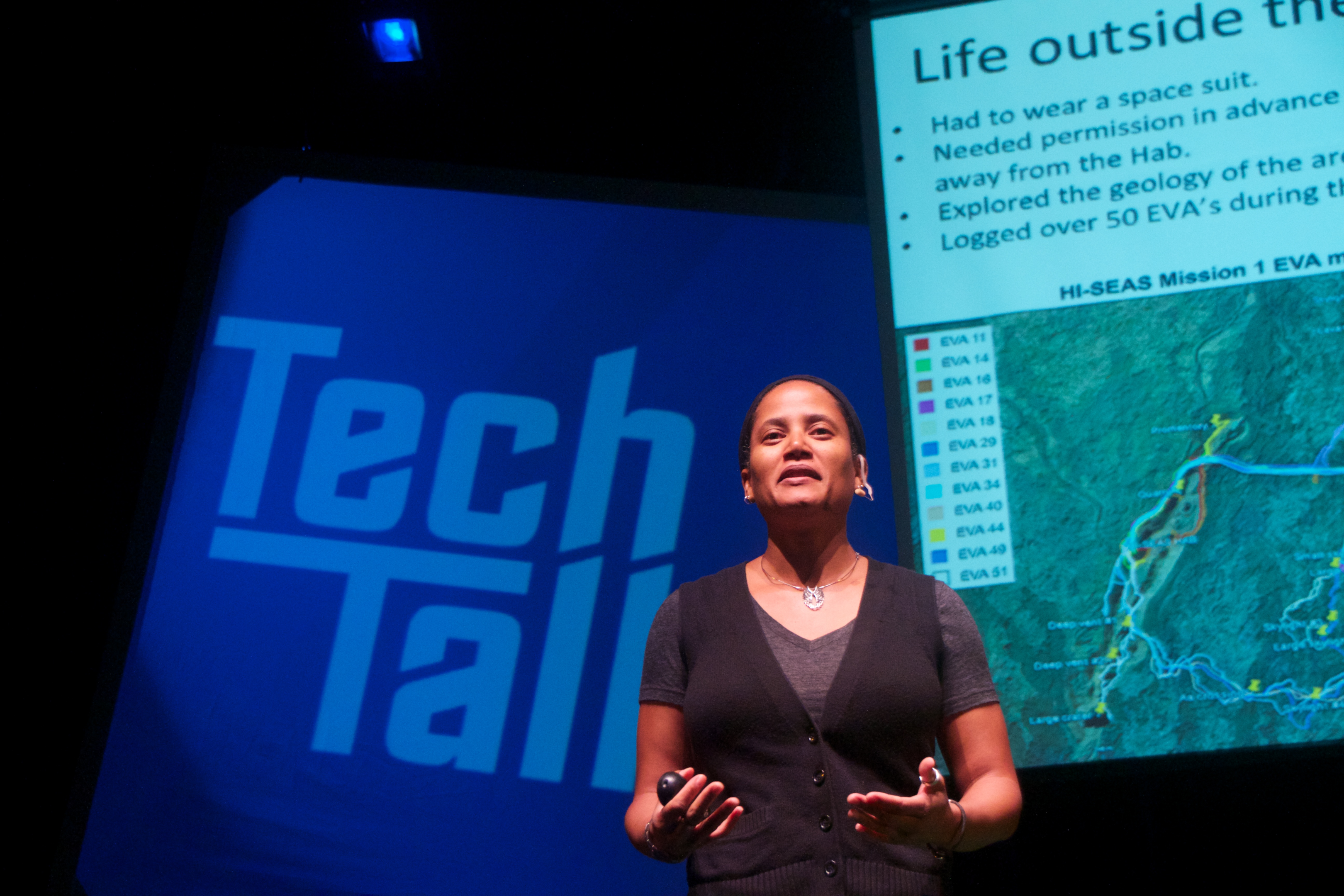The Startups Team
The Solution Slide in an investor deck explains exactly how our startup company will solve the issue we set up in our Problem Slide. We'll walk you through the formula of the best decks in a single slide you can easily replicate.

Why does the Solution Slide Matter?
The Solution Slide takes our entire business model and distills it down to 1 or 2 sentences in our pitch presentation. If we did a good job to convince investors in the Problem Slide that we're tackling a big market of potential customers with severe consequences, then our Solution Slide will make us sound like a hero.
A Good Solution Slide is Focused
We want the investor to be crystal clear on this explanation of the business. We don't want them to go in multiple directions, so we're going to spend a lot of time trying to keep them focused — and by way of that — keep ourselves focused. If the investor were to close the slide deck right now, this solution slide is exactly how we want to be remembered.

What’s an Investor Thinking?
Before we get into some examples of the solution slide, let's highlight the pain points that are in the potential investors' minds. We don't want to waste any effort in our pitch deck that isn't going to map back to a single investor pain point. Fortunately, those are very well known.
Investor: "Do I understand the Solution Slide?"
Often when we're building the solution slides or explaining the pitch deck, we'll use jargon or key information that makes sense to us but totally confuses the investors we are pitching. Remember, most investors are two slides deep into our pitch deck at this point, they have little to no context or history for why this Solution Slide is truly accurate.
Investor: "How does the Solution Slide relate to the Problem Slide?"
We'll dig into this in detail, but the Problem Slide should directly reflect the Solution Slide — these are the two key slides in the whole pitch deck. One of the best examples of what happens when we go off the rails is setting up a really broad problem and then presenting a Solution Slide that only addresses one aspect of that problem.
We want to limit the scope of our Solution Slide to only what we've outlined in the Problem Slide. If investors have to chew through the whole pitch deck to find out how we solve the Problem, that's a big issue.
Investor: "Do I believe this is the Right Solution Slide?"
Investors may understand our Problem Slide just fine, but may have a serious issue with the approach we take in our Solution Slide. In the early days, Co-Founder Brian Chesky had no problem convincing investors about the Problem Slide of the Airbnb pitch deck (the market size for vacant rooms) but the Solution Slide (renting out your spare bedroom) was a massive challenge.
A winning deck doesn't try to make the entire argument in a single solution slide — this actually leads to a lot of "slide bloat" that we try to avoid. Instead, the Solution Slide is designed to illustrate the path the rest of the pitch deck is doing to take. It's also very simple, in the form of a single declarative sentence as often referenced in the Sequoia Capital pitch deck examples.

The Solution Statement Formula for an Investor Pitch Deck
The reason reviewing pitch deck templates often won't help a startup Founder is they don't tell you what formula to use. Fortunately, the formula for a Solution Slide is dead simple — it's the inverse of the Problem.
That's why we focus so heavily at first on the Problem because it completely frames our Solution Slides and really the whole pitch deck after that. Let's take a look at a few examples of how the best pitch decks are constructed using this inverse strategy.
Example: Uber Problem Slide
In our other lesson we used Uber as the sample pitch deck with this Problem statement:
"U.S. passengers spend $75 billion per year to ride and taxis that are unclean, hard to find, with unfair pricing."
When we build the Solution Slide, we'll use the pitch deck template of the Problem, and just reverse it. What matters is that the solution slide only features the items we cited in the Problem — "unclean, hard to find, with unfair pricing."
Example: Uber Solution Slide
Now all we need to do is is reverse the Problem, and in this case, we'll also add the fact that we're a mobile app to give the product some context:
"Our mobile app helps passengers easily find a clean taxi with fair, up front pricing."
Voila! All we had to do was reverse the Problem and we've got a perfect pitch deck slide that investors can easily understand and remember. If you look closely at the best pitch deck examples, you're going to see this same formula repeated over and over.
Notice that what makes this work is the simplicity of it. We didn't try to explain the entire business model, unpack competitive advantages, or even provide details on our customer base. The first slides set up the concept and the rest of the deck (competition slide, traction slide, etc.) explains how we pull it off.

Where it Breaks — Being too Vague
As Founders, we often overlook the fact that investors don't necessarily understand who our future customers might be, or understand the entirety of the business plan the way it's in our head. So we wind up with vague language that just confuses people. Here's an example:
"Uber is a Mobile App to hail a Taxi."
While this is "true," it really doesn't address the pain points of potential customers which is what our audience of investors really wants to know. It's our job to highlight what features our customers care about — and why.
Never Let Investors Guess
We want to avoid letting investors "guess" what our story is. It's our job as Founders to translate our entire business plan into a single declarative sentence on each pitch deck slide that screams "This is exactly what you should take away from this slide!"
This actually applies through our pitch deck from our product slide to our financial forecasts - never let the investor guess what the slide means. Again, this is a balancing act. We don't want to be so vague our solution doesn't resonate and we don't want to be so detailed that we write a whole book to explain ourselves.
Lean Hard on the Problem
When we look at our solution we have to ask ourselves "Does this specifically address the problem I laid out in the previous slide and nothing more?" Keep coming back to the parameters you set out of the problem's scope. Sometimes the answer is to modify the Problem to fit our Solution better.

Solution Slides with Too Many Solutions
Now let's take it in the other direction with the pitch deck, where we've got way too many solutions instead of being too vague. We see this probably 9 times out of 10, where a startup founder lists every possible solution with some doctored-up pitch deck template they downloaded.
example of a Solution Slide Pitch Deck with too many solutions:
Uber is a mobile app that will help hail cabs, enable anyone to be a driver, normalize market pricing and provide supplemental income.
The challenge with loading all of these "solutions" into our pitch deck is that investors will never remember all of them. Each option suggests a totally different path for the solution, and while they all may be true, our key recommendations tend to follow the aspect that will draw the biggest target market.
Rank the Solutions; Pick the Best

How it Works versus What it Does
Our Solution needs to explain what the outcome of our product is — what the customer got done. It's not to go into the details of how it works.
If I had just invented the combustion engine car for the first time, I would explain that it allows you to get from Point A to Point B without riding a horse. That's "what it does." Afterward in the pitch deck, I would go on to explain how an internal combustion engine and a transmission work, to create propulsion.
If the investor doesn't understand what the goal is (what it does) then jumping into how it works is simply premature. Our solution needs to just explain the outcome, no more. We'll get into the details of the product mechanics in the "How it Works" slide or in some cases a product demo.

Common Mistakes for Solutions Slides in Pitch Decks
The last 3 examples cover most of the mistakes most startup Founders make in a pitch deck but let's take a look at a few more details that tend to get overlooked.
Mistake #1: Overexplaining
A perfect solution statement can be communicated in 1 or 2 sentences - that's it! We don't get any points for adding every last thing our company will possibly do. We need to create the clearest, concise explanation that will focus our audience on exactly where we delight customers and ultimately, make money.
Mistake #2: Avoid Useless Images in Slides
We want what our company does to be the focus of our presentation, not a business of stock business images that we think make the slide "look cool." It buys us nothing. We're better off with nothing but a blank white slide with a single declarative sentence on it than a slide loaded with a bunch of graphs and images that distract our audience members from our key points.
Mistake #3: Avoid Hyperbole
We want to purge our slides of any and all hyperbole. Pretty much anything that could end with an exclamation mark is bad! Investors won't get more excited about our deal because we've turned our pitch deck into a sweet infomercial. We need to use "matter of fact" language that supports our point and no more.
Mistake #4: Bullet Points vs. Paragraphs
We generally want to avoid paragraphs of copy anywhere in our pitch deck. Instead, we should distill every metric from our revenue traction numbers to key metrics on user engagement into just a few bullet points. This applies throughout the deck not just to the solution. Bullet points are easier to visually digest and force us to isolate exactly what's most meaningful about our company.

Final Thoughts
As a startup accelerator, we see thousands of decks from every type of company you could fathom — from a digital product startup to a BioMed product, to a company that will clean up space junk that doesn't even exist yet! If startup founders (like you!) were to just follow the recommendations in this blog post you'd be 99% further along than most startup company pitches.
Remember that the originally stated Problem is your guide through all of this. If you're having a hard time getting your Solution to "work," try first adjusting the problem so that it properly aligns and encompasses the Solution the way you want it.
Last, potential investors are going to focus on one or two aspects of your pitch and nothing more. Don't try to overwhelm them by stuffing as much content about your company into these slides as possible. If they want to learn more — they will ask. Otherwise, the conversation during the in-person pitch will naturally expand where you want it to.
Remember — pitch, revise, repeat. That's the difference between a good pitch deck and a winning pitch deck!
Find this article helpful?
This is just a small sample! Register to unlock our in-depth courses, hundreds of video courses, and a library of playbooks and articles to grow your startup fast. Let us Let us show you!
Submission confirms agreement to our Terms of Service and Privacy Policy.
No comments yet.
Start a Membership to join the discussion.
Already a member? Login